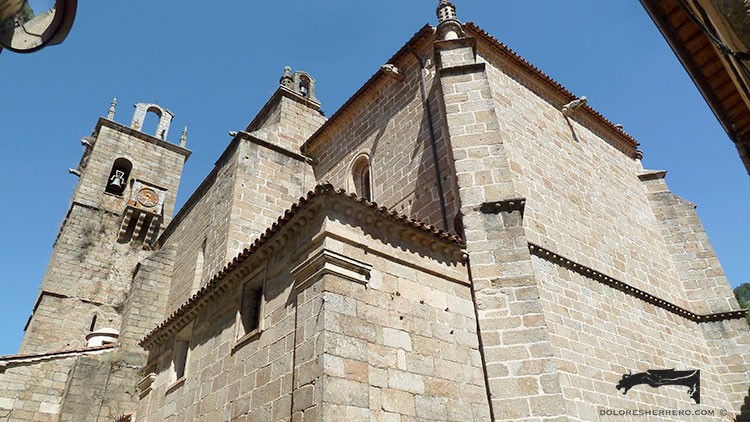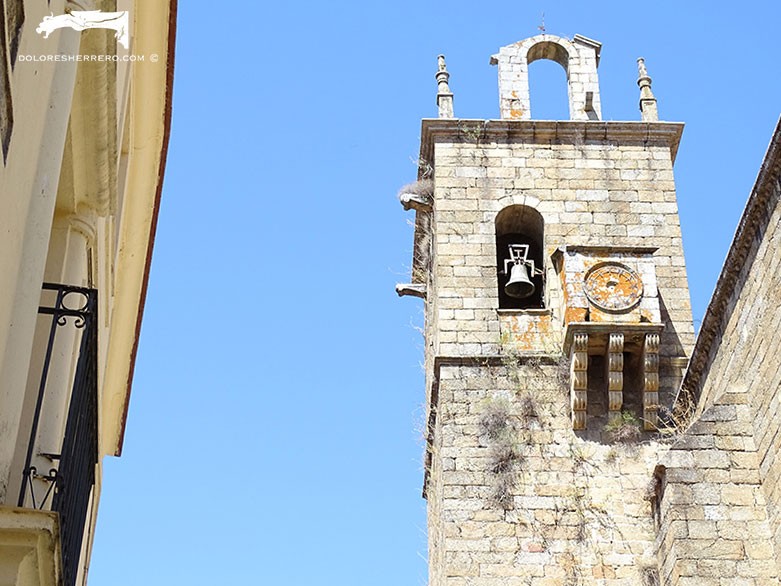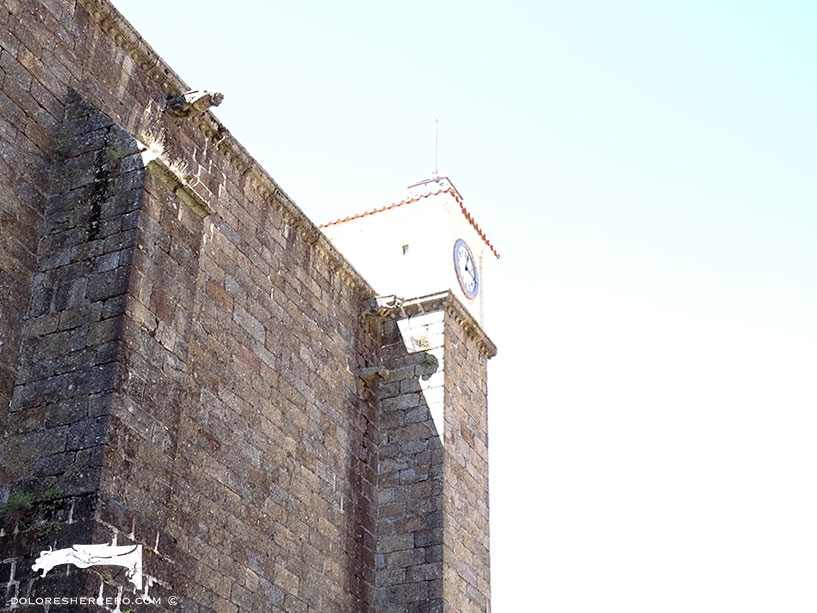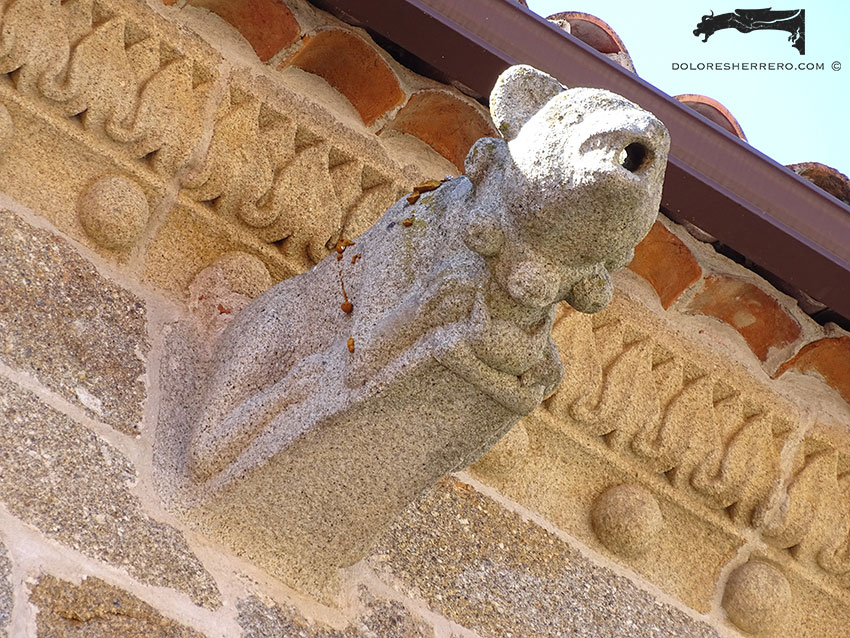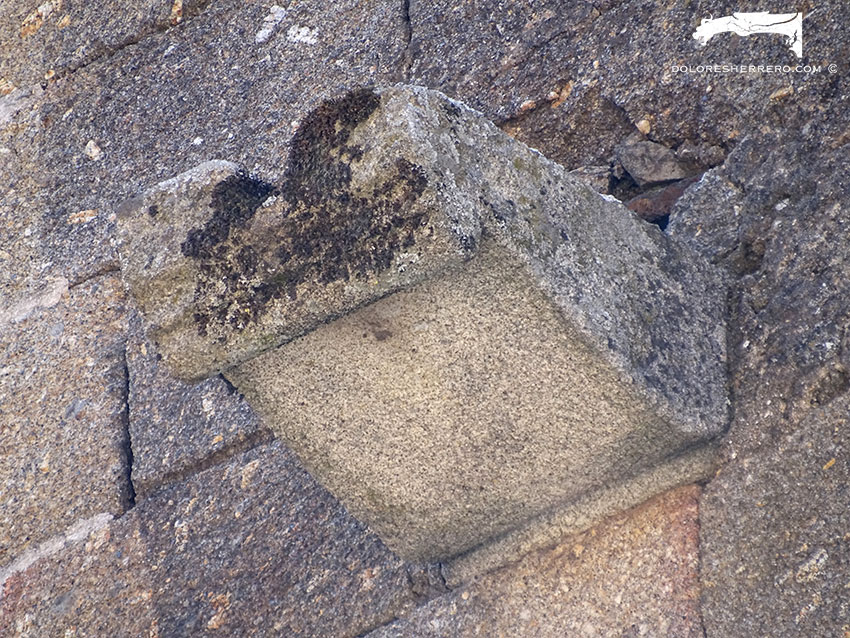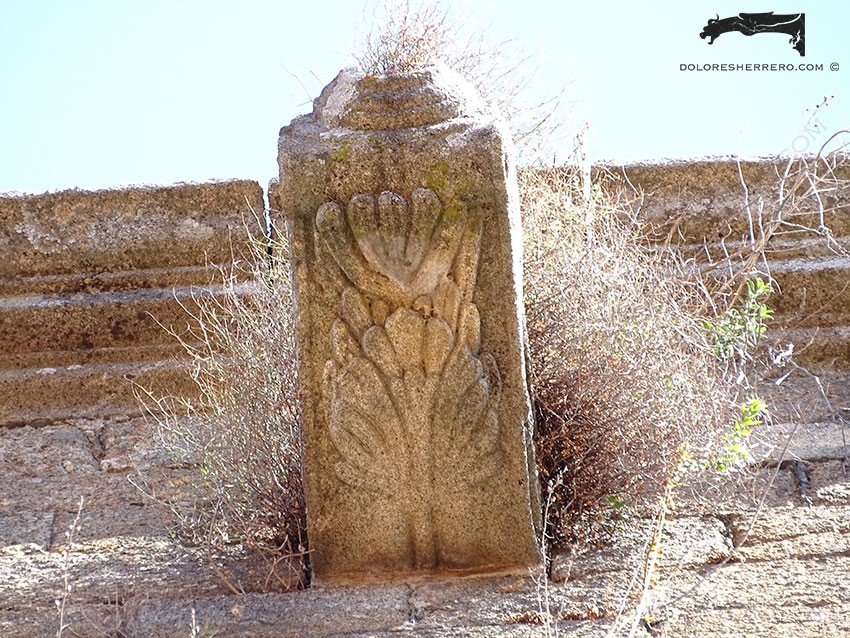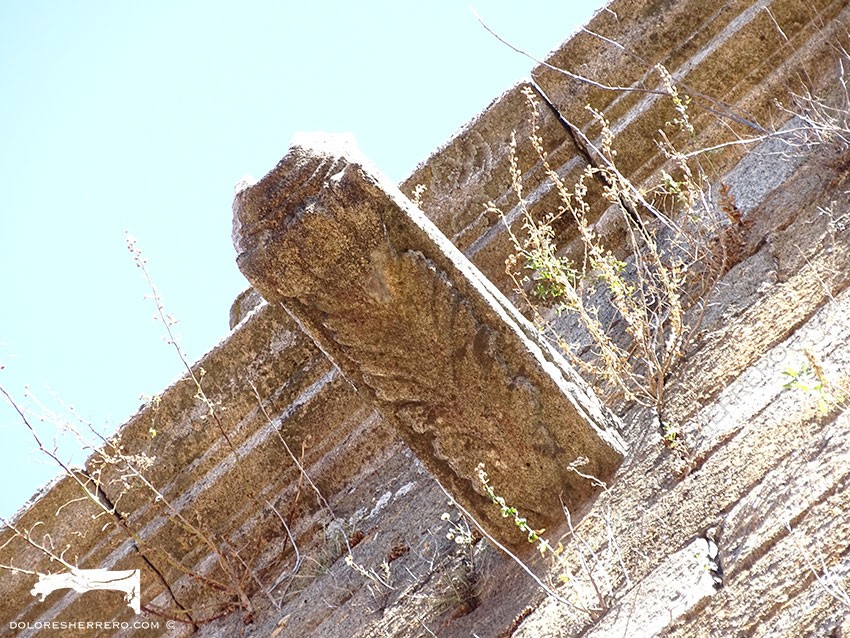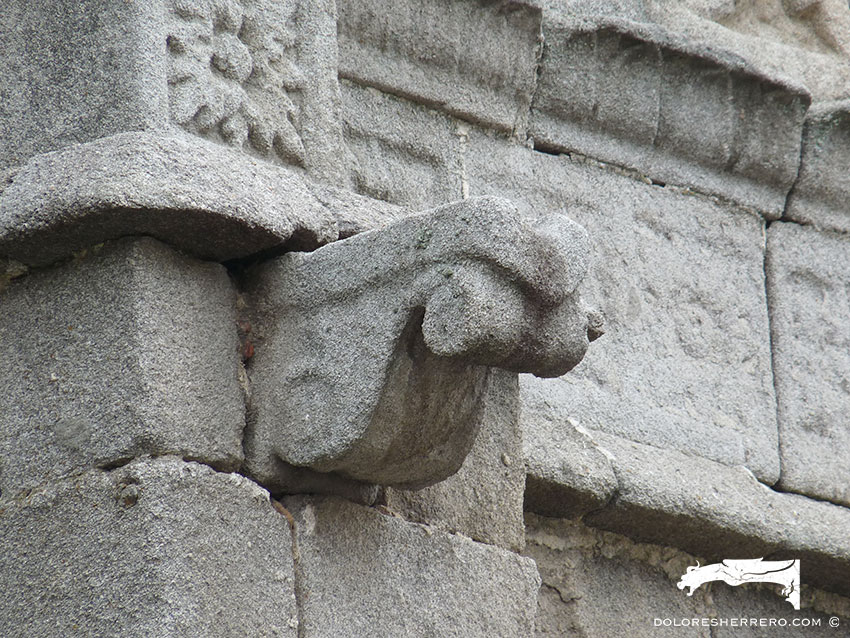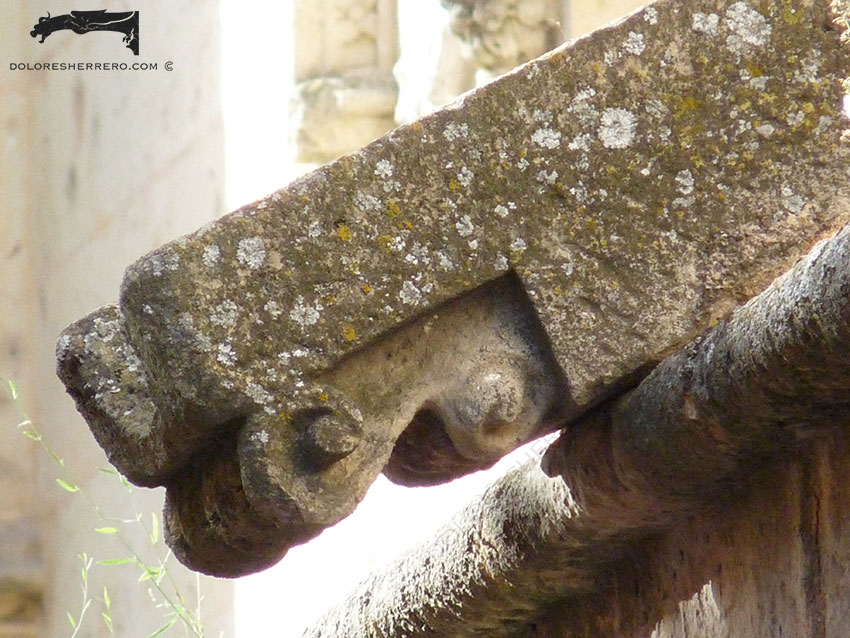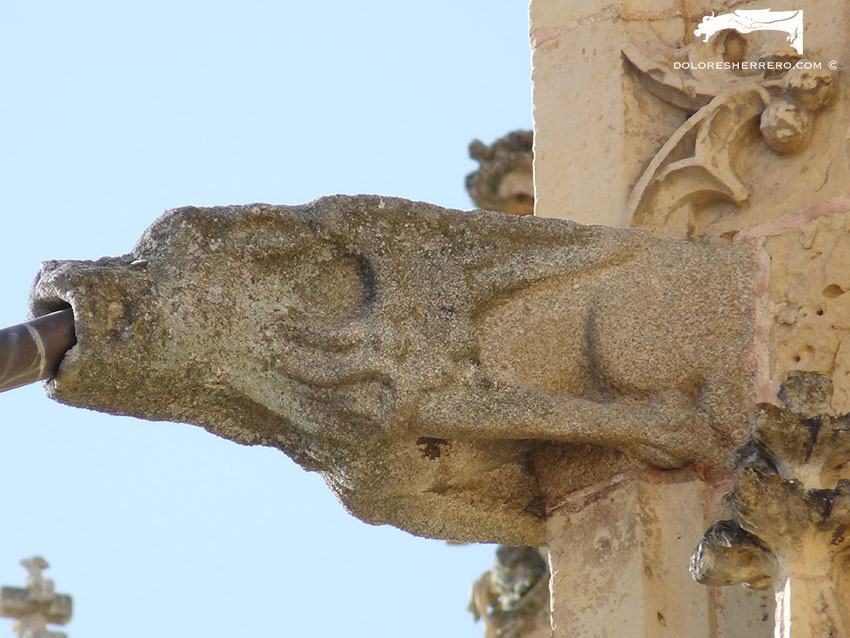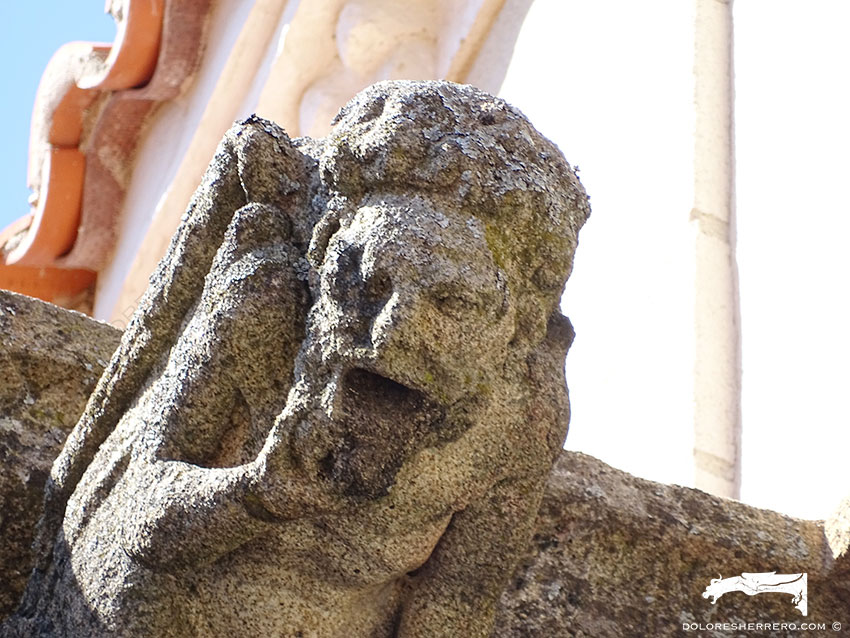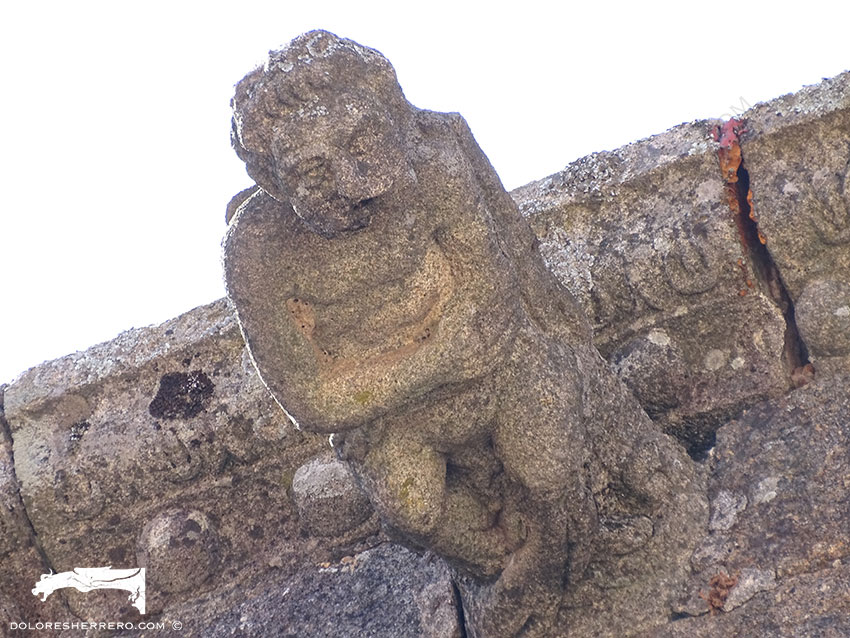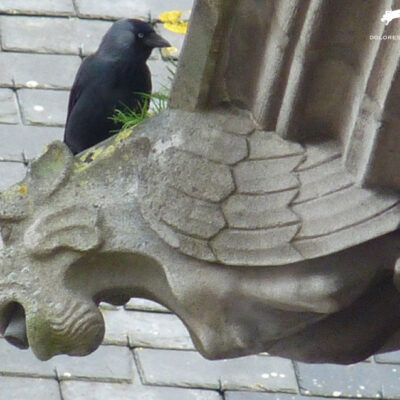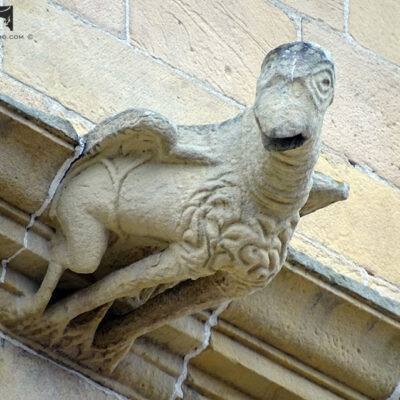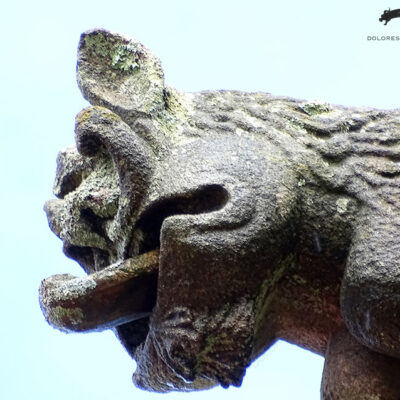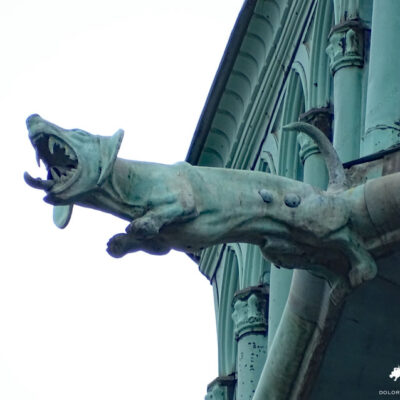This entry is devoted to one of the most interesting groups of gargoyles we have encountered during our travels.
History and Architecture of the Church of San Pedro in Gata
These are the gargoyles of the parish church of San Pedro, located in the remarkable town of Gata, in the beautiful province of Cáceres. Remarkable not for its size, but for the extraordinary beauty not only of the town itself, but also of the landscapes that surround it.
The church was built between the 16th and the 18th centuries, although there was a parish church in the 13th century and the Order of Alcántara held its Chapter meeting there in 1410.
The Gargoyles of the Church of San Pedro
The gargoyles are extremely interesting in both a formal and an iconographic sense. They represent a variety of types, bearing in mind that there are only around a dozen or so of them.
Gargoyles Representing Real Animals
You can see animals like the lion and the dog. The figure of the lion is very distinctive, with its legs pointing upwards (as if rampant) and the head to one side, a stance that makes it very expressive. A dog with simple features and a large collar made up of balls is unlike the others, and another vaguely shaped animal holds its paws up to its mouth.
Gargoyles Representing Geometric Forms
There also geometrical gargoyles. They are rectangular and some have a simple shape with moulding underneath the opening. Others are highly original as apart from the triple moulding in the opening, giving them a more ornamental appearance, their bodies have lovely plant decorations and on the sides you can see a kind of scroll rolled up at the ends, typical of the Renaissance period and seen in other gargoyles such as the ones on Ávila and Segovia Cathedrals (Spain).
- Ávila Cathedral (Spain)
- Segovia Cathedral (Spain)
Gargoyle Representing a Winged Quadruped
There is also a winged quadruped with a dog-like head, bat-like wings and long ears that looks like some of the gargoyles on Segovia Cathedral (Spain). It also has a human head under its body, a common feature of gargoyles with different meanings (ornamental, sinner and so on).
- Segovia Cathedral (Spain)
Gargoyles Representing Human Figures
The most striking and remarkable features of the gargoyles of this church are the human figures. All of them have crossed legs—a gesture associated with pride—and are represented nude. They are magnificent, expressive, and truly surprising.
One of the male figures places his right hand on his beard, while his left rests on his knee. Another figure—somewhat more deteriorated, so that the details are not clearly visible—has its arms resting on its lap, protuberances on the lower part of the body, and feet that end in double hooves or claw-like forms.
The only gargoyle representing a female figure is a truly impressive sculpture. She has curly hair—associated with the image of the sinful woman—sagging breasts, her right hand placed on the pubis and her left hand on one breast. From a symbolic point of view, this figure is particularly interesting, as it may convey several meanings. On the one hand, it may be related to lust, since this gesture appears frequently in Romanesque and Gothic sculpture. It may also refer to the idea of the sinful woman who covers her pubis with her hands as a sign of shame, like sinful Eve. It could even be a figure with demonic connotations, not only because of the sagging breasts—a feature that appears in some demonic figures and that we have discussed in a previous entry—but also because the feet end in the form of a serpent’s tail (spiral-shaped), an animal traditionally associated, as we know, with the devil. Moreover, this latter feature of the feet could also be linked to the idea of a human being gradually transformed into an animal as a consequence of sin—like the previous figure—a type of gargoyle found on churches and cathedrals intended to warn the faithful of the consequences of their transgressions, a subject we have already addressed when discussing symbolism.
Finally, on the same façade as the female figure, there is a male figure with his right hand on his beard and his left hand resting on his right arm, in a meditative pose. Related to the previous gargoyle, and considering both their proximity and the fact that both figures are represented nude, this figure could well represent a sinner, in this case sinful Adam. Furthermore, in connection with the crossed legs, we should not forget that original sin was a sin of pride.
We invite the reader to delve into the history of Gata, where historical events and figures of great significance intersect, such as the Order of Alcántara, Antonio de Nebrija, and the War of the Communities.
A beautiful town, landscapes of remarkable beauty, a church of notable interest with a Baroque oakwood altarpiece, and singular gargoyles that form part of the artistic heritage of Extremadura and, ultimately, of our shared cultural heritage.
We would like to thank Lola, a tourist guide, whose enthusiasm and profound knowledge of the place encouraged us to visit Gata and to discover the gargoyles of the Church of San Pedro.
Bibliography
CAMILLE, M., El ídolo gótico. Ideología y creación de imágenes en el arte medieval, Madrid, Ediciones Akal, S. A. Arte y Estética, 57, 2000.
KENAAN-KEDAR, N., Marginal Sculpture in Medieval France. Towards the deciphering of an enigmatic pictorial language, Hants (England) and Vermont (USA), Scolar Press and Ashgate Publishing Company, 1995.
REBOLD BENTON, J., Holy Terrors. Gargoyles on medieval buildings, New York, Abbeville Press, 1997.

Doctor of Art History and researcher specializing in the study of gargoyles.
I am Dolores Herrero Ferrio, and my thesis, “An Approach to the Study of Gargoyles of Gothic Cathedrals in Castilla and León”, is dedicated to the study of these fascinating figures.
If you like gargoyles and art history, you will also enjoy my book, “The Gargoyle and Its Iconography,” a book I have written with great care for those interested in the world of gargoyles.
I have created my own Encyclopedia of Gargoyles, a Gargopedia to share with you, where you will discover all the secrets and wonders of these enigmatic sculptures.
I hope you enjoy this Gargopedia as much as I have enjoyed creating it, and remember that each gargoyle has a story to tell, and here you will discover them all.
